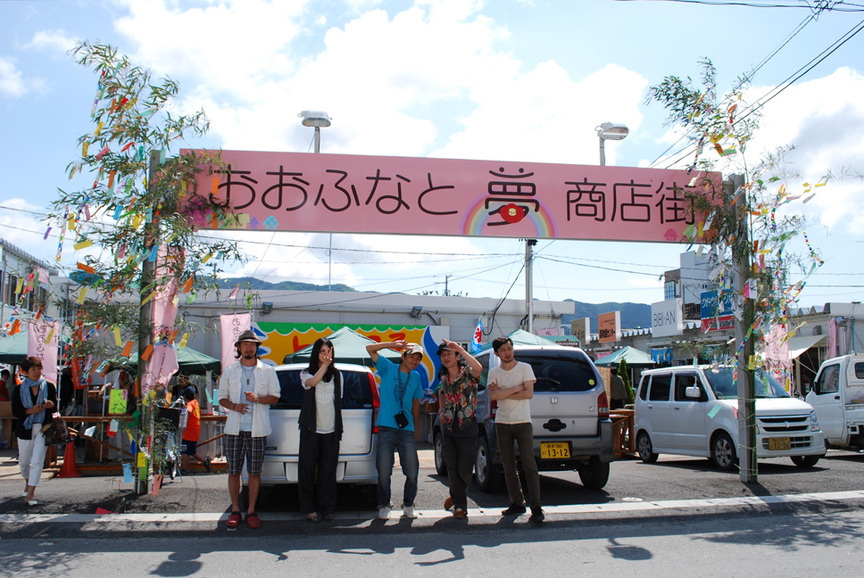
R
E
V N
E
X
T
In this area of Japan’s northeastern Iwate prefecture, the impact of last year’s tsunami can still be strongly felt: abandoned train tracks fill with weeds growing where people once stood waiting at the station, cement foundations are all that remain from countless houses and buildings that stood in low lying areas, the remnants of a public bathhouse with its roof torn off—and the endless debris. As destruction is gradually being cleaned up and relief efforts are bringing many people their essential needs in the seaside areas of Tohoku, artists too are playing a significant role in the emotional recovery of residents in towns such as Ofunato.
The first trip to Tohoku after the water subsided in May 2011 was very emotional for the artists, collectors and gallerists who traveled with well-known Tokyo art collector, Hiroko Ishinabe, to Ofunato, where she grew up. Feeling the need to do “something,” she resolved to engage her creative network to spark new life amidst the loss and devastation in the city, where many of her relatives still live. Since the March 11 disaster last year, she has brought a steady stream of creative volunteers to her hometown to contribute to the many festivals that dot the Japanese calendar, bringing signs of hope into an everyday where daily necessities such as food, water and a warm place to sleep are no longer taken for granted.
Yappeshi Matsuri was a name chosen by the local people, taken from a dialect term used in the Iwate region, meaning “lets do it!” (yappeshi), emphasizing the local nature of the event. It was held during the Tanabata festival, which traditionally celebrates the union of star deities Orihime and Hikoboshi (seen to be the stars Vega and Altair respectively) for just one evening of the year, based on the Chinese Qixi festival. Despite rain on the first day, hundreds of local community members came to hang up their handwritten hopes and wishes, receive massages, play games, fly paper lanterns and visit the “listening booth”—all set up along the temporarily rebuilt Yume Shotengai (“Dream Shopping Street”), which had been completely destroyed by the tsunami.
All images in this slideshow are courtesy James Jack and Yoshito Otani.



